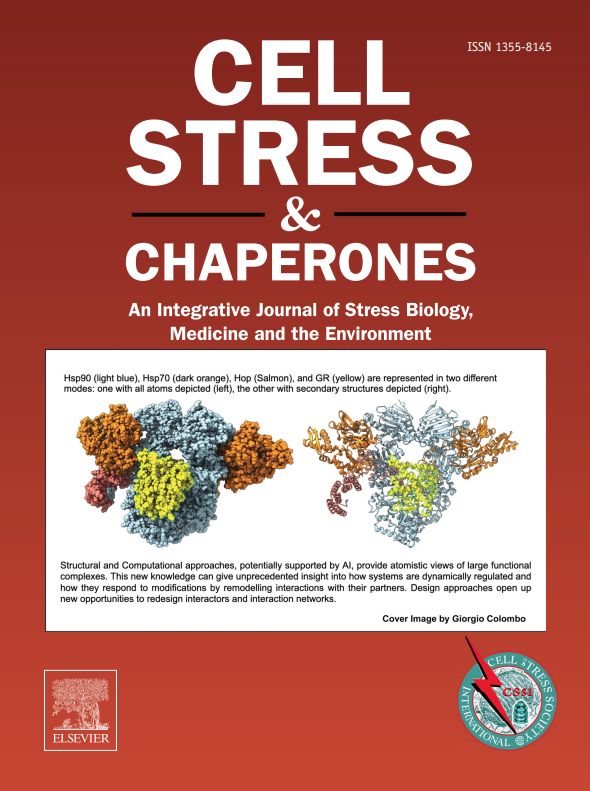TBX5-AS1 induces ER stress and suppresses lung cancer growth and tumor stemness via the miR-494-3p/ATF6 axis
IF 3.2
3区 生物学
Q3 CELL BIOLOGY
引用次数: 0
Abstract
Tumor stemness maintenance and endoplasmic reticulum (ER) stress response have been strongly correlated with the progression of lung cancer (LC). Nevertheless, the role of long non-coding RNAs (lncRNAs) in these processes remains incompletely understood. We screened LC-associated lncRNAs from the GEO database and validated the expression of TBX5-AS1 in clinical samples. Functional experiments were conducted to assess the biological effects of TBX5-AS1, and western blot was used to detect ER stress marker proteins. The interaction mechanism of the TBX5-AS1/miR-494–3p/ATF6 axis was elucidated through dual-luciferase reporter assays, RNA immunoprecipitation (RIP), and pull-down experiments. Rescue experiments and a nude mouse xenograft model were employed to validate the functional outcomes. TBX5-AS1 was significantly downregulated in LC tissues and cell lines, and its low expression was associated with advanced tumor stages and poor patient prognosis. Overexpression of TBX5-AS1 markedly suppressed LC cell proliferation, migration, invasion, and self-renewal while promoting the activation of the ER stress pathway. Mechanistically, TBX5-AS1 competitively binds to miR-494–3p, thereby relieving its transcriptional repression of Activating transcription factor 6 (ATF6). Rescue experiments demonstrated that miR-494–3p overexpression reversed the regulatory effects of TBX5-AS1 on tumor malignant phenotype and ER stress. In vivo experiments further confirmed that TBX5-AS1 overexpression significantly inhibited tumor growth, accompanied by upregulation of ATF6 and ER stress-related proteins. TBX5-AS1 functioned as a tumor-suppressive lncRNA by activating ER stress signaling through the miR-494–3p/ATF6 axis, thereby inhibiting LC growth and tumor stemness.
TBX5-AS1通过miR-494-3p/ATF6轴诱导内质网应激,抑制肺癌生长和肿瘤干性。
肿瘤干性维持和内质网(ER)应激反应与LC的进展密切相关。然而,长链非编码rna (lncrna)在这些过程中的作用仍然不完全清楚。我们从GEO数据库中筛选了lc相关的lncrna,并验证了TBX5-AS1在临床样本中的表达。通过功能实验评估TBX5-AS1的生物学效应,采用western blot检测内质网应激标记蛋白。TBX5-AS1/miR-494-3p/ATF6轴的相互作用机制通过双荧光素酶报告基因检测、RNA免疫沉淀(RIP)和下拉实验来阐明。采用救援实验和裸鼠异种移植模型来验证功能结果。TBX5-AS1在LC组织和细胞系中显著下调,其低表达与肿瘤分期晚期和患者预后差有关。TBX5-AS1过表达显著抑制LC细胞增殖、迁移、侵袭和自我更新,同时促进内质网应激通路的激活。在机制上,TBX5-AS1竞争性地结合miR-494-3p,从而减轻其对ATF6的转录抑制。救援实验表明,miR-494-3p过表达逆转了TBX5-AS1对肿瘤恶性表型和内质网应激的调节作用。体内实验进一步证实TBX5-AS1过表达显著抑制肿瘤生长,同时伴有ATF6和内质网应激相关蛋白上调。TBX5-AS1作为肿瘤抑制lncRNA,通过miR-494-3p/ATF6轴激活ER应激信号,从而抑制LC生长和肿瘤干性。
本文章由计算机程序翻译,如有差异,请以英文原文为准。
求助全文
约1分钟内获得全文
求助全文
来源期刊

Cell Stress & Chaperones
生物-细胞生物学
CiteScore
7.60
自引率
2.60%
发文量
59
审稿时长
6-12 weeks
期刊介绍:
Cell Stress and Chaperones is an integrative journal that bridges the gap between laboratory model systems and natural populations. The journal captures the eclectic spirit of the cellular stress response field in a single, concentrated source of current information. Major emphasis is placed on the effects of climate change on individual species in the natural environment and their capacity to adapt. This emphasis expands our focus on stress biology and medicine by linking climate change effects to research on cellular stress responses of animals, micro-organisms and plants.
 求助内容:
求助内容: 应助结果提醒方式:
应助结果提醒方式:


